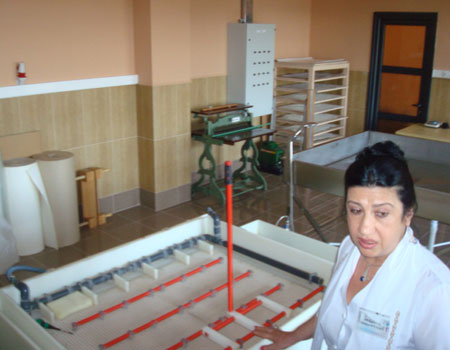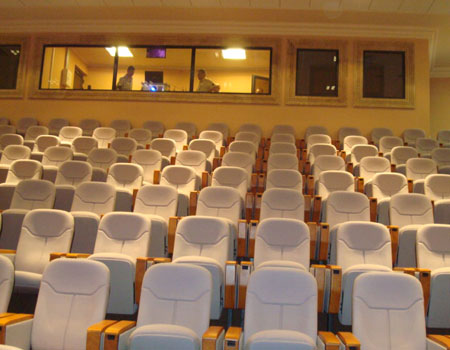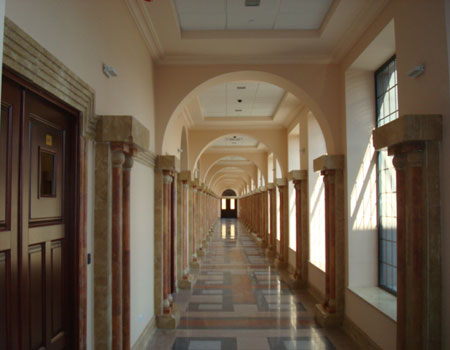The opening ceremony for a new building at the Matenadaran (Mashtots Institute of Ancient Manuscripts) will take place today in the Armenian capital. Work began as early as 2009, and the building was completed two-and-a-half years later.
Building architect Artur Meshchyan had the plans in his possession since 1986, but realized the project only this year.
During a visit to the Matenadaran yesterday, guide Siranush Aspaturyan informed journalists that everyone and everything — scientific team, archives, manuscripts — were moved from the old to the new building.
“On the first floor is the library, where there are approximately 2,000 ancient books published from the years 1215 to 1800. Readers, scientists and students who are preparing to defend their theses, all of whom have come to the Matenadaran, can make use of this library. There are two reading rooms. The Matenadaran also has a department for restoring books where 15–18 employees work — the department is replete with modern equipment. The archives are on the second floor. We also have a 184-seat hall, which will be used during scientific meetings. We didn’t have a theater in the old building,” said Aspaturyan.
Head of the department of scientific development of preservation of archival documents Ara Kzmalyan, in turn, said that fortunately, in the Matenadaran today, more importance is given to archival work, which for years, on the backdrop of gathering manuscripts, was in the shadows.
“The repository is ensured by all thermal safety standards; we can comfortably say that finally these unique values have found their place. Around 400,000 archival documents are kept in the archival department, where unique and especially valuable documents are not few. The system of technological development and preservation is also at a new level. Around 10,000 documents have already been digitalized. In the future, we are going to import these digital copies to Matenadaran’s internal network and through this, limit the physical contact with documents. The old Matenadaran building will become a museum — complete reconstruction of the building will begin in October,” said Kzmalyan.
Hovhannes Chitchyan, director of the Matenadaran Foundation (name could not be confirmed in English), asserted that the new building was built with funds supplied by benefactors.
“The foundation’s expenses were 14 million drams [about $37,351 USD]. The main benefactor was Moscow resident, businessman Sergei Hambartsumyan ($10 million), [while] the rest was donated by the Zangezur Copper Molybdenum Combine [“Plant”], Russian entrepreneur Makar Nahapetyan and Yerevan City Hall, which gave 520 million drams [about $1.4 million USD]. If we take into consideration the complexity of this structure, the speed of construction was unprecedented,” said Chitchyan.
Matenadaran Director Hrachya Tamrazyan, in turn, noted that the second stage of construction is the reconstruction of the Matenadaran’s pillar building.
“The old Matenadaran building, if it had one static gallery, now will have a combined series of 9–10 static galleries so that we will be able to showcase the treasures and all of the riches of the Matenadaran in full. And that wealth increases day by day. In the last three years alone, 1,500 manuscripts were acquired. After the old building, the next stage is improving the entire Matenadaran area. The Matenadaran has to begin from Mashtots Ave. — we will find unique solutions also in terms of the placement of statues and panels,” he said.
Building architect Artur Meshchyan, speaking to journalists, stated that he’s not afraid to say that today is a joyful day because “completed was a program that was not limited only to talk, oaths and promises; rather, carried out was a work that reached its final end.”
 Epress.am News from Armenia
Epress.am News from Armenia





